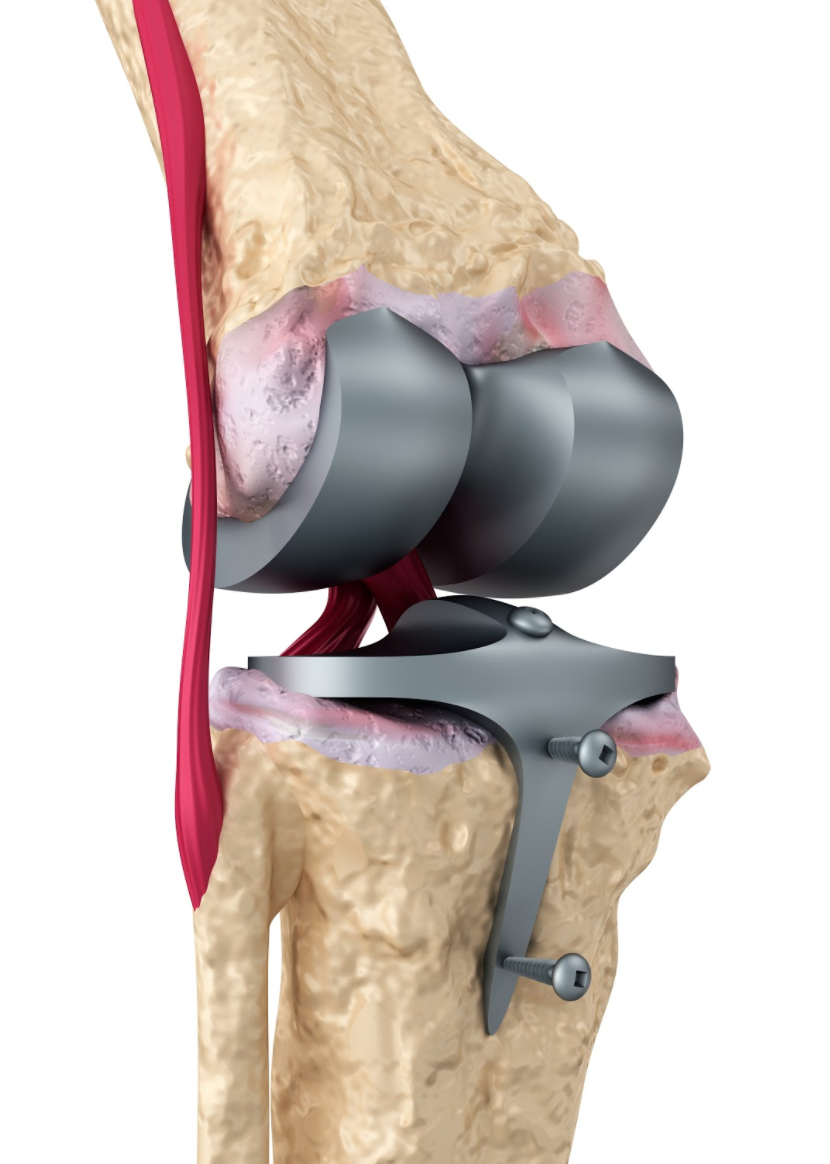
It happens that with age,osteoarthritis develops and causes difficulties on a daily basis. Whether it is when walking, climbing up and down stairs or even crouching to take an object on the ground. The doctor can offer you different solutions to soothe your pain. On the other hand, the last possible solution may be surgery. We will see in this guide what happens before, during and after the big operation.
Before
When you have significant knee osteoarthritis, you experience several symptoms: Pain and difficulty in doing your daily activities.Osteoarthritis causes irreversible damage to the cartilage and the bones. It degrades the cartilage, which is the layer between two bones, and then osteoarthritis affects the bones of the joint causing abnormal growth. In this case, osteoarthritis can affect the femur, the tibia and sometimes the patella (knee cap).
When osteoarthritis is severe and prevents you from working or performing daily activities, the orthopedist can recommend a surgery to replace the most affected parts. This is called a Total Knee Replacement (TKR).
You will have a face-to-face meeting with a physiotherapist or physical rehabilitation technician to teach you the exercises that will start the day after surgery. Also, techniques of transfers to bed and chair will be demonstrated, as well as how to go up and down the stairs. The contraindications to be respected post-surgery will also be addressed.
Surgery
The surgery aims to replace the injured parts of the bones mentioned above (the femur, the tibia and the patella). The patella will not be systematically operated. Everything will depend on its state during the operation. If very damaged, it will undergo the same treatment as the other bones of the joint, i.e. a resection of the damaged part and a replacement of it by a piece of titanium smooth and molded, hypoallergenic materials for the majority of the population.
The prostheses
There are several types of prostheses. The choice will be made by your doctor and will depend on your daily activities. Depending on the level of wear and tear of the joint and the location of the joint. Sometimes there is only one part of the knee joint that is damaged, so the installation of a ” total ” knee prosthesis is not necessary. A total prosthesis consists of 3 parts: a femoral, a tibial and a patellar. If there is only one side damaged, the surgeon can opt for a unicompartmental prosthesis.
Usually, prostheses have a lifespan between 10 and 20 years. Their lifespan depends on the use you make of them and if you respect the restrictions following the operation. We will discuss this later.
The day after the operation and the following days
On the day after the operation, the first lift is performed, and the exercise program to mobilize the knee starts. Immediately, the loading, i.e. the weight of the body on the leg, is allowed according to tolerance of the patient in the majority of cases. You will be able to walk with a walker to start, but the technical help will evolve at the same time as your condition. TKR surgeries are known to be painful and most of the time, considerable inflammatory swelling of the leg is to be expected.
The goal, to be able to be discharged from the hospital, is to achieve a minimum of 90 ° flexion of the knee and to be able to do all transfers, walking and stairs independently (without supervision of another person). Normally, bending at 90 ° is achieved within four days of surgery. On the other hand, in some cases, joint stiffness is gradually taking place, especially in people who do not do their exercises and do not participate physiotherapy adequately. It is therefore of paramount importance that you work very hard in rehabilitation so that your knee becomes functional again.
Subsequently, you must continue physiotherapy to be able to regain a life as normal as possible: walking without technical help, being able to go up and down the stairs as you see fit and get back to your other activities.
When the scar is well healed, it is strongly recommended to massage it to prevent it from adhering. When a scar is adherent to the underlying structures, such as the patella or tibia, it sometimes happens that it is more difficult to make the bending movement, because it pulls the other tissues.
Contraindications
In the days following the operation, do not place a pillow under the knee, do not keep the knee bent for too long in order to avoid the installation of stiffness at the knee.
Some activities are discouraged following the surgery. Sports that create shocks at the knee such as running and jumping can damage the prosthesis and reduce its lifespan. For some prostheses, it is recommended not to kneel for the same reason.
In summary
In summary, it is recommended to do the operation when osteoarthritis is very important in the knee. The operation aims to change the distal part of the affected bones. After the surgery, it is important to move the knee and reach a functional level as quickly as possible. Several exercises will be given to help you gain the mobility, strength and suppleness of your leg so that you can find your life as much as possible.
Sabrina Paquet TRP
Clinique Physiomédic









